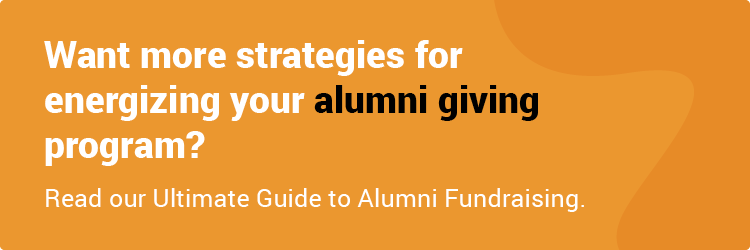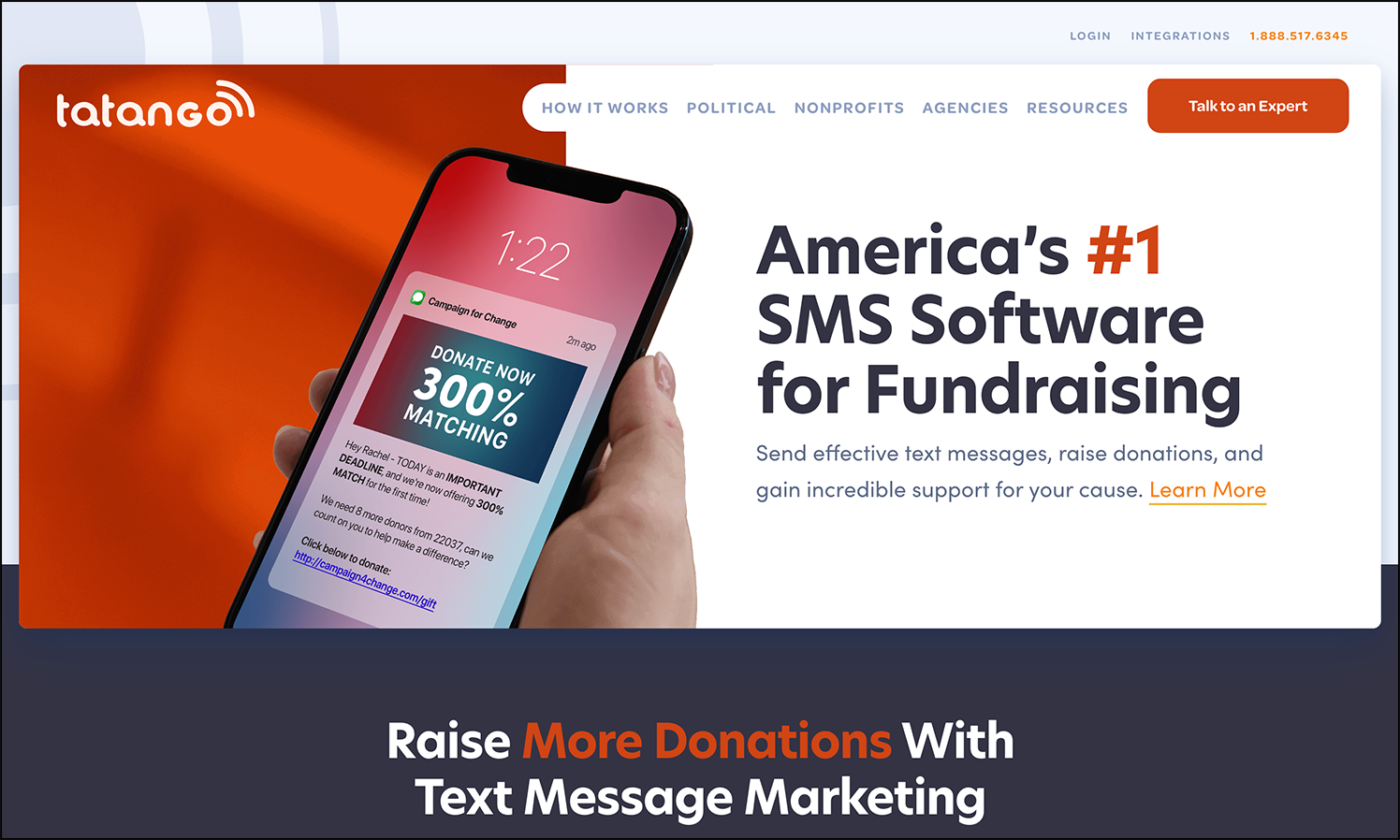
Between small recurring gifts and large one-time donations, alumni giving often makes up the largest segments of university fundraising efforts. Who’s more motivated to donate to your university than the individuals who were once students themselves?
Keeping this in mind, this guide will review the current state of alumni giving, the best practices for engaging your alums, and the most effective ways to increase your alumni giving rates. We’ll also review the tools that make it easier to reach your fundraising goals. Here’s what to expect:
- Why is Alumni Giving Important?
- Exploring Alumni Giving Rates and Trends
- How Can Prospect Research Help Find Top Alumni Donors?
- Alumni Giving Best Practices
- 6 Helpful Alumni Giving Tools
As we walk through these steps, you’ll likely find yourself exploring the quantitative and qualitative information you have on your alums. Before making any programmatic decisions, however, plan to conduct an audit of your alumni database, remove outdated and duplicate information, and enhance your data with additional wealth and philanthropic indicators. Then, you can be confident that any changes you make will be based on the most accurate, thorough data possible.
Why Is Alumni Giving Important?
Alumni giving is important for two primary reasons: it offers crucial support to the important work your university does in educating the leaders of tomorrow and it’s a key indicator of your university’s financial health. In this section, we’ll cover how alumni donations tend to be directed and used by universities, plus the major benefits of developing an alumni giving program.
How Are Alumni Donations Used?
There isn’t just one type of student that graduates from your school. Likewise, you don’t have only one type of alum. Your graduates have gone on to be biologists and writers, farmers and professional athletes. In many cases, alums will direct their donations to a specific program or department that was meaningful to them during their studies. In fact, restricted gifts make up 93% of giving to universities.
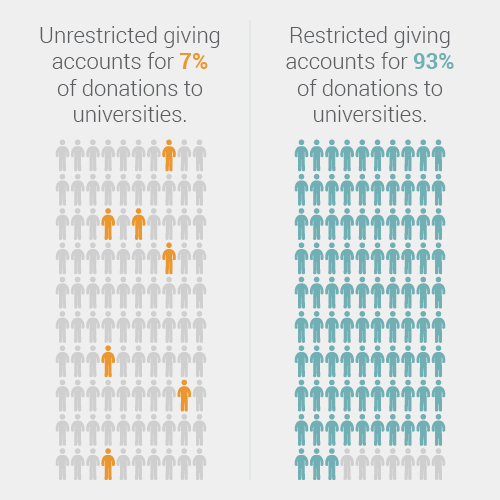
Overall, alumni giving generally funds:
- Scholarships. If an alum received a specific scholarship or support during their time at your university, they’ll often want to “pass on” this opportunity to current and future students.
- Construction costs. Usually, alumni interest in funding construction projects piques after the kickoff period of a capital campaign to fund a specific project, such as a new science center with up-to-date technology or a state-of-the-art theater. Alums are particularly apt to give to buildings for which the name (e.g. the Alumni Hall) will acknowledge their contribution.
- Research projects. Funding faculty research can be attractive to your alumni, especially when it’s framed in the context of its impact on students and the broader community.
- Operational costs. While the day-to-day operations of running a university aren’t as sexy as new experimental research, they are just as important! Because of this, operational costs generally end up being funded by unrestricted donations.
By engaging the diversity of your alumni community, you’ll be able to attract and direct resources across your funding priorities.
What Are the Benefits of a Strong Alumni Giving Program?
Even though the majority of alumni gifts contain restrictions, they are still incredibly valuable to your university. So why exactly is it important to build a strong alumni giving program? A thriving program allows you to:
- Access a broad range of support that adds up to make a big impact. Relying entirely on one income source can become a big problem if you suddenly lose that stream. Alumni giving helps you avoid that risk by diversifying your fundraising efforts across a large body of donors. Moreover, small gifts can really add up. For example, in a given year, an annual fund made up of $500,000 in small donations can have the same financial effect as the payout of a $1 million endowment.
- Boost your university’s reputation. While it’s more difficult to measure the impact on your school’s reputation, anecdotal evidence suggests that it boosts national rankings, which, in turn, can boost enrollment rates. Moreover, when your reputation is high, alumni will feel proud to support your school and publicly share that support with their network.
- Build a strong culture of giving back. If you build this culture of giving to your university with early-career alumni—even if they’re giving in small amounts—they’re more likely to turn into major donors down the line.
Instead of waiting for students to graduate, plan to begin the process of cultivating them as future donors during their time on campus. Make it clear when alumni donations are directly enhancing your current students’ experiences. Additionally, give current students opportunities to back your school in non-financial ways, such as leading campus tours, writing thank-you notes to donors, and participating in phone-a-thons.
Exploring Alumni Giving Rates and Trends
In order to understand the importance of alumni giving, it’s useful to reflect on the current and historical rates and trends for this fundraising source. Here are the statistics that should be at top of mind as you develop or update your alumni outreach efforts:
Alumni giving accounts for approximately 23% of annual funds raised by U.S. universities (Council for Advancement and Support of Education).
Other funds come from foundations (33%), non-alumni individuals (17%), corporations (13%), and other organizations (14%). While this will vary from school to school, this metric is a good starting point for evaluating the success of your giving program.
In 2021, total giving to U.S. universities grew from $49.5 billion to $52.9 billion, a 5.1 percent increase after adjusting for inflation (Inside Higher Ed).
While this is certainly good news, it’s worth noting that the rate of alumni who choose to donate is not seeing a proportional increase. Rather, this increase is the result of larger gifts from a few wealthy philanthropists, and not necessarily smaller gifts from a large body of donors.
In fact, the average alumni giving rate during the 2017-2018 and 2018-2019 academic years was 8% (U.S. News).
That means that 92% of alums aren’t making regular financial gifts to their alma maters—a huge untapped resource! What determines alumni generosity? Alumni choose to give—and not to give—for a variety of reasons, including:
- Their current financial situation.
- Their connection to their alma mater and members of that community.
- Their moral principles and political values.
- Their interest in creating a family legacy.
While some of these factors are out of your hands, others can be swayed. We see this in the wide range of giving rates across U.S. institutions. So what is a good alumni giving rate?
Princeton tops the list of colleges with the highest giving rates, with an alumni giving rate of 55% (U.S. News).
Though every program will have its differences, Princeton’s alumni giving effort can be a useful model for an effective outreach program. Clearly, high rates of alumni giving are possible with the right strategy and a long-term commitment to that strategy.
So what’s the best approach to achieve a Princeton-level of alumni giving? In the wake of the COVID-19 pandemic, 89% of university presidents expressed a “serious concern” for their institution’s financial security. As we’ve seen the rapid shift away from in-person events, the most adaptable fundraising departments have also seen the most success in retaining and improving donor engagement.
In the next section, we’ll focus on how prospect research can serve as a solid foundation for the changes you make to your alumni giving program.
How Can Prospect Research Help Find Top Alumni Donors?
A scattershot method to recruiting all those untapped alumni donors might seem like a good idea, but that’s a sure way to waste your resources and produce diminishing returns.
Prospect research can help optimize your efforts to connect with major alumni donors who are most likely to donate. As we saw in the statistics above, these are the individuals who will provide the bulk of your alumni fundraising support.
Using prospect research, you’ll take an informed strategy to filter for specific qualities in your pool of alums, such as:
- Estimated net worth
- Current job
- Giving history
- Engagement history
- Home value
- Presence of children
- Demographics
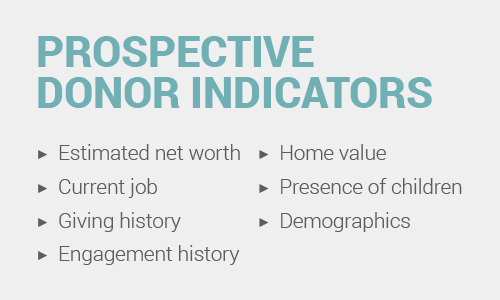
These markers help determine a prospective donor’s likelihood and ability to donate. For instance, while searching for ideal donors to support the quiet phase of a capital campaign to build an on-campus art museum, you may filter for both philanthropic and wealth indicators. Have they contributed to an annual giving campaign in the past? At what level? What department (e.g. art history) did they major in?
Once you’ve determined who you’ll target to ask for donations, you can use the information you’ve gathered in your prospect research to tailor your outreach approach and ask. For example, to return to our capital campaign example, you’d want to reach out to major donors individually. But for a small donor, an email or letter (automatically personalized with your donor management software) would likely be your best allocation of resources. When you’re aware of an individual’s financial situation and giving history, you can request a donation amount that’s most appropriate for them.
Alumni Giving Best Practices
When you’re ready to jump into recruiting alumni donors, follow these best practices for the best results.
- Segment your audience. As you research your prospects, segment your alumni contact list to create more tailored content for each group. For example, you might create a segment for each graduation year, a segment based on giving history, and another one on current income.
- Personalize communications. With segments in place, you can use your CRM, plus enhanced data analytics, to make even the largest outreach efforts feel personal. For instance, automatically fill in each individual’s graduation year or giving history. In all direct communications, refer to your alumni by their preferred names and titles. Few things make someone want to give less than an email that begins with the generic and impersonal “Dear Alum.”
- Don’t just ask for donations. Instead of only reaching out when you want money, use your communication platforms to share other updates and opportunities for alumni to get involved in. By taking this approach, they’ll see your communications as valuable, stay on your mailing lists, and respond positively when you do make a financial ask. In doing this, you’re also creating opportunities for them to become more connected to your community, and thus more likely to want to support it.
- Don’t overlook the importance of social media. With 90% of 18- to 29-year-olds in the U.S. active on social media, you’re most likely to find, reach, and cultivate relationships with younger alums online. Use social media to share updates and spread the word about giving initiatives. Unlike email or direct mail, social media is great for sharing quick day-to-day updates as well as engagement and giving opportunities. Keep your posts fun, playful, and informative, respond to comments and direct messages quickly, and make sure you’re targeting the platforms where your alumni are already active.
- Optimize your online donation form. Streamline your online donation form for both mobile and desktop browsers. Today, 20% of U.S. adults are “smartphone-only” users, so it’s particularly important that your donation page be optimized for mobile devices. Choose a secure payment processing system that can be embedded into your website, accept all types of payments, and be designed to match your existing brand.
As you make these updates to your alumni giving program, keep an eye on your giving participation rate. Calculate this by the number of your current alumni donors divided by your total number of alumni. Moreover, use your segments to identify giving rates among specific alumni populations. Tracking these rates over time allows you to measure what’s working and not, and make the appropriate changes.
6 Helpful Alumni Giving Tools
With alumni giving best practices in tow, let’s consider the resources that will make your department’s life easier, your outreach more effective, and your fundraising more successful.
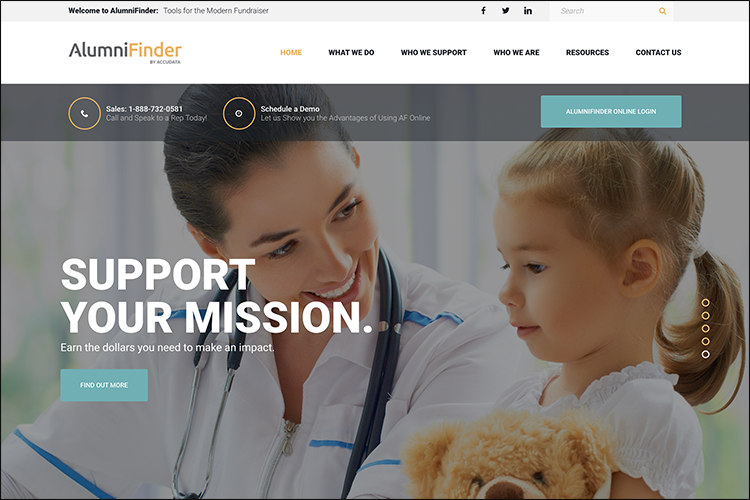
AlumniFinder
It’s difficult to reach your alumni if you don’t know who or where they are. With average alumni giving rates as low as they are, the first step to re-engaging these potential supporters is cleaning up and filling out your database with their current and relevant information. AlumniFinder offers data hygiene, enhancement, and analytic tools to:
- Clean and update alumni data.
- Enhance your database with heightened intelligence.
- Analyze and segment your alumni data.
- Target and engage alumni via digital campaigns.
AlumniFinder’s tools can help you work efficiently in your fundraising efforts and increase your overall fundraising revenue.
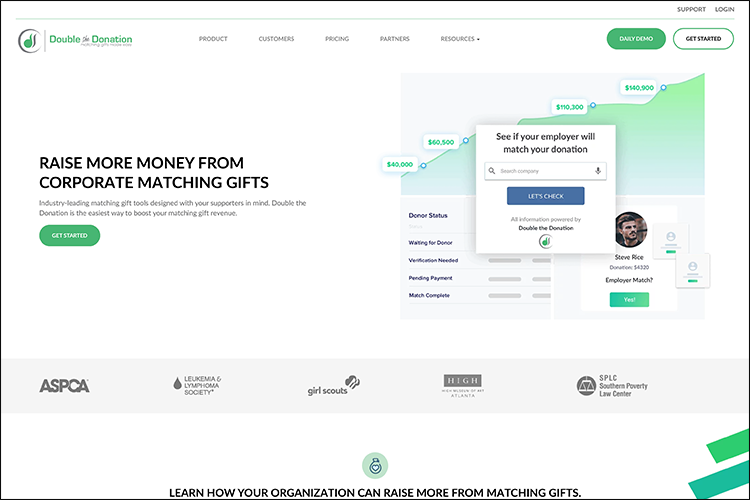
Double the Donation
Many corporations will offer to match the gifts their employees make to nonprofit and educational organizations. These matching gifts are an easy way to amplify your existing alumni giving. Corporate matching grants will often double or even triple an employee’s donation. However, 78% of match-eligible donors have no idea their company offers a matching gifts program.
Double the Donation is a matching gifts database that allows you to take advantage of these missed matching gift opportunities by letting eligible donors know that their company will match their gift and providing them with the forms or links needed to submit their match requests.
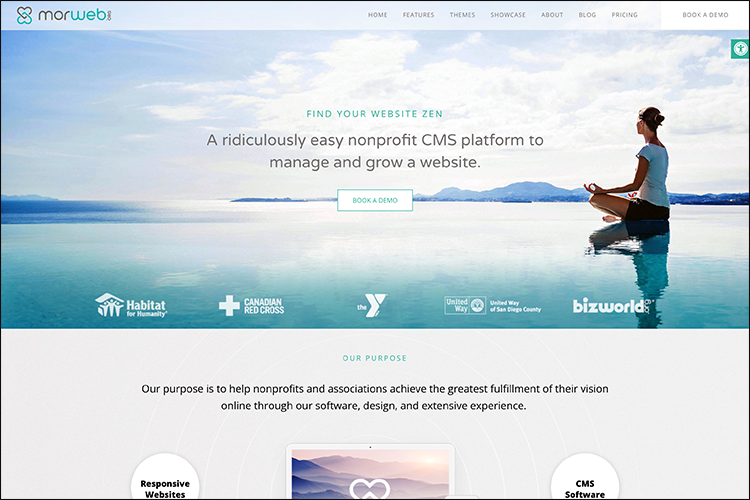
Tatango
As a university or college, you understand the importance of emotionally connecting with your alumni to encourage giving. In order to reach alumni directly with your donation appeals and encourage them to act, you need to leverage text messaging.
Text messages have a 99% open rate and a 90% read rate within just three minutes of sending. Designed to drive engagement and boost fundraising results, Tatango is the leading text messaging platform for higher education institutions. Their top features include:
- Automation
- Segmentation
- Real-time data reports
- Fast messaging speeds
- Mass sending
Tatango’s tried and true software can give your higher education institution the support it needs to maximize alumni fundraising and nurture long-lasting relationships.
Morweb
Morweb is a design firm that specializes in nonprofit and higher education websites. It offers customizable layouts, mobile optimization, multimedia and accessibility tools, and donation form integration. As you build or revamp your website, follow design best practices such as:
- Design your website to be easy to navigate and visually consistent with your university’s brand.
- Optimize your website for accessibility by including transcripts for multimedia elements, alt-text to graphics, and an accessibility widget.
- Update your donation form to be streamlined for desktop and mobile devices with multiple ways to give.
Consider also asking trusted alumni for input on what they’d like to see on your school’s website, such as a page for class notes or listings on opportunities to get involved.
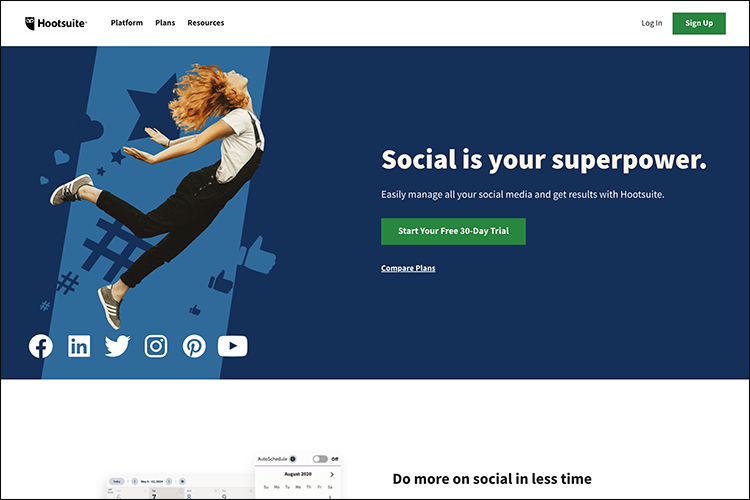
Hootsuite
As noted earlier, using social media to engage your alumni can make a huge difference in their sense of connection to your university. A social media manager like HootSuite allows you to manage all your platforms in one central place. With HootSuite, you can create a plan across your social media and customer care channels, schedule organic posts and paid ad campaigns, and track trends and interaction metrics (followers, views, reposts) to see how your strategy is and isn’t working.
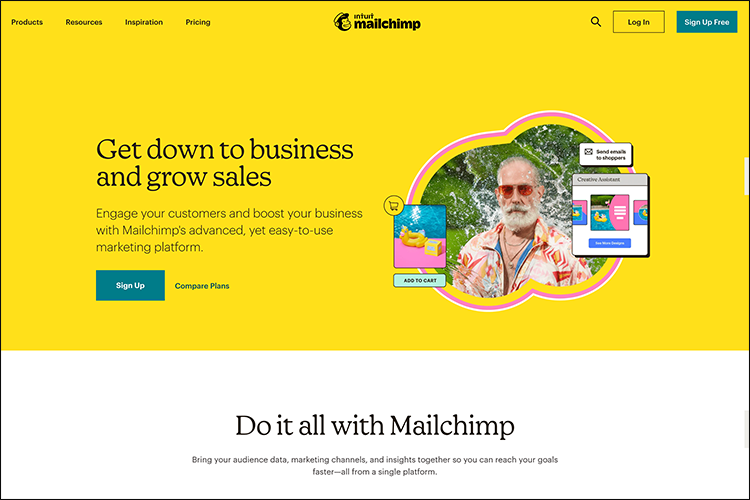
MailChimp
Once you have your website up and running, you’ll want to direct traffic to high-impact pages—particularly your donation form. With MailChimp, you can build targeted emails to specific alumni segments, create automatic, personalized follow-up messages, and analyze the results to understand click-through and conversion rates.
While all of these resources are useful individually, they’re at their most effective when used in combination with one another across the stages of alumni engagement. For example, you might use AlumniFinder to source and segment the current contact information for recent graduates, who you can then target in a MailChimp marketing campaign.
In Summary
In many business sectors, we talk about working smarter, not harder. Alumni fundraising is no different. From the strategies you take to the tools you use, you want to raise the most money with the most directed, thoughtful effort.
Thus, conducting research and making a detailed plan is fundamental to a successful fundraising program. If you’re unsure where to start, AlumniFinder can help you make informed decisions based on high-quality data.
For more strategies for using data to reach and engage your alumni, check out these fundraising resources and recommendations:
- The Ultimate Guide for University Fundraising. If you’re planning a fundraising event, this guide details a step-by-step process, plus a checklist for fundraiser design and implementation.
- Higher Education Marketing Strategies to Help You Boost Enrollment. Interested in marketing strategies for engaging the next generation? This guide surveys the available digital approaches to engaging prospective students as well as recent alums.
- Tools for the 21st Century: A Modern Fundraiser’s Success Kit. With a focus on data-driven fundraising tools, this guide shares four steps to help you achieve your fundraising goals.


